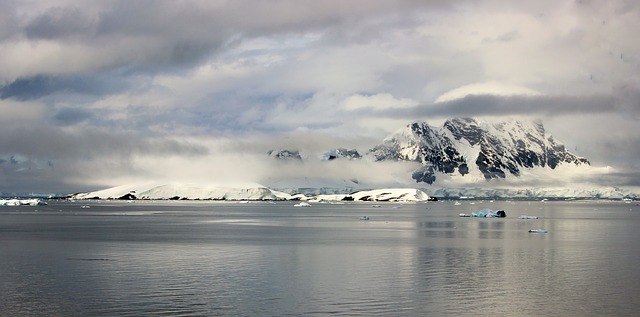The whole world may be heating up, but one place has remained impervious to these environmental changes. The Southern Ocean around Antarctica has stayed at roughly the same temperature, even while the Arctic has been rapidly warming.
A study conducted by the University of Washington and the Massachusetts Institute of Technology have discovered why the waters around the South Pole have remained cool, reports Space Daily. Observations and climate models in this research show that the unique currents around Antarctica are continuously pulling up deep, centuries-old seawater to the surface – waters that last saw the light before the Industrial Revolution began, and have therefore never experienced any climate change brought on by fossil fuels.
Lead author Kyle Armour, an assistant professor of oceanography and atmospheric sciences at the University of Washington, says,
With rising carbon dioxide you would expect more warming at both poles, but we only see it at one of the poles, so something else must be going on.
“We show that it’s for really simple reasons, and ocean currents are the hero here.”
Westerly winds of high velocities constantly moving around Antarctica push surface waters northward, a motion which in turn draws up water from below. These waters come from such great depths and distances that they have never experienced modern global warming.
The same thing happens on the Pacific side of the Americas and the equator, but the waters are drawn from only a few hundred meters deep and don’t have the same effect.
“The Southern Ocean is unique because it’s bringing water up from several thousand meters [as much as 2 miles],” Armour said. “It’s really deep, old water that’s coming up to the surface, all around the continent. You have a lot of water coming to the surface, and that water hasn’t seen the atmosphere for hundreds of years.”
The waters surfacing in the South Pole last saw the Earth’s atmosphere centuries ago in the North Atlantic, then sank and followed various paths throughout the world’s oceans before coming up again in Antarctica.
The relative coolness of the Antarctic Ocean is often seen in global climate models, but the reason behind this phenomenon was previously explained as churning, icy seas mixing the extra heat downward towards the deeper waters. Using this theory, the study used information from Argo observational floats to track where the missing heat might have gone. They found that the heat was actually being carried away from the South Pole.
“The old idea was that heat taken up at the surface would just mix downward, and that’s the reason for the slow warming,” Armour explained. “But the observations show that heat is actually being carried away from Antarctica, northward along the surface.”
In the Atlantic Ocean, the ocean’s surface moves northward to the Arctic. Models have shown that ocean water that has experienced the most climate change tends to direct towards the North Pole, which explains why the Arctic Ocean and ice are greatly affected by climate change while the South Pole virtually remains as it has been for centuries.
“The oceans are acting to enhance warming in the Arctic while damping warming around Antarctica,” Armour said. “You can’t directly compare warming at the poles, because it’s occurring on top of very different ocean circulations.”
Now, finding out where the extra heat trapped by greenhouse gases go and discovering why the poles are warming at different rates will help scientists better predict future temperatures.
“When we hear the term ‘global warming,’ we think of warming everywhere at the same rate,” Armour said. “We are moving away from this idea of global warming and more toward the idea of regional patterns of warming, which are strongly shaped by ocean currents.”
The study was published in Nature Geoscience.
























